Understanding Tap and Go Credit Cards: A Complete Guide
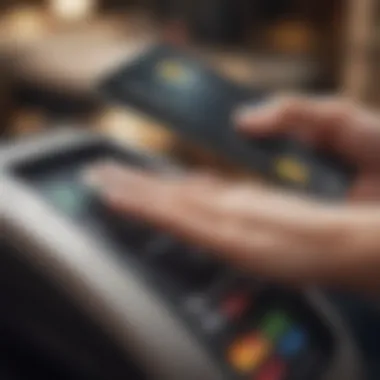
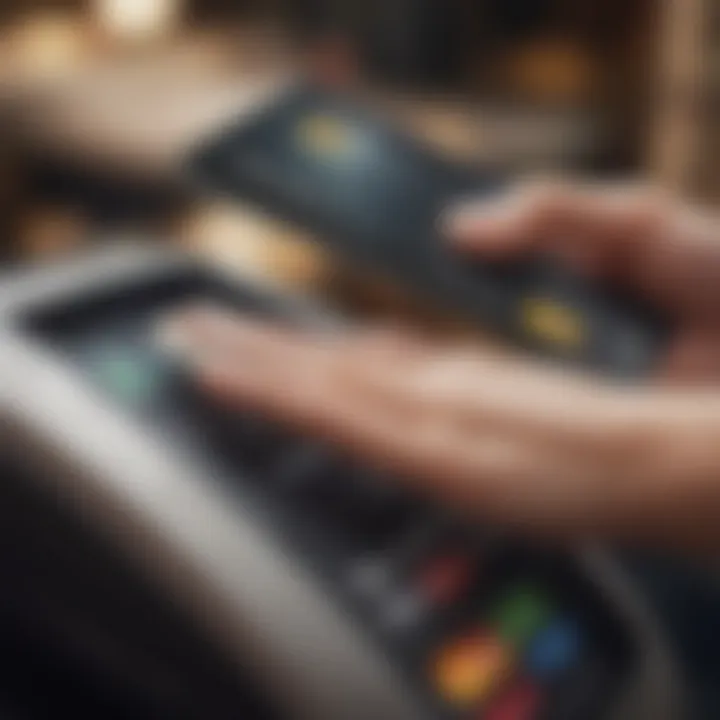
Intro
In recent years, the world of personal finance has seen quite a shift, particularly with the rise of tap and go credit cards. These nifty little plastic pieces have turned into an everyday essential for many. They allow consumers to make transactions with a simple tap, saving a lot of time compared to traditional methods. From coffee runs to grocery shopping, people are embracing this technology, and understanding the mechanics behind it is crucial for anyone looking to streamline their financial dealings.
Tap and go credit cards, also known as contactless cards, use a technology called Near Field Communication (NFC). This means that just by tapping your card on a compatible terminal, your payment processes almost instantaneously. But while convenience is a major draw, there's more beneath the surface that potential users should be aware of.
Some might be wary about the security of these cards. After all, how can a simple tap be secure? Well, these cards come equipped with several features designed to protect user information, which we will dive into throughout this guide.
Understanding the advantages and disadvantages of using tap and go cards can help consumers make informed decisions about their personal finances. We’ll also look ahead, considering the future of contactless payments and how they may impact consumer trends.
So whether you're a newcomer trying to get your head around this modern payment system, or a savvy user looking to deepen your understanding, this guide aims to equip you with the knowledge needed for savvy financial choices.
Investment Terminology
Getting acquainted with the financial jargon surrounding tap and go credit cards is essential in navigating this evolving payment landscape.
Key Terms and Definitions
- Contactless Payment: A type of payment method that enables transactions without the need to physically swipe the card. Just a tap will do.
- NFC (Near Field Communication): The technology enabling contactless payments, allowing for short-range communication between devices.
- EMV (Europay, MasterCard, Visa): Industry standards for smart payment cards to enhance security and interoperability.
- Tokenization: The process of replacing sensitive card information with a unique identifier to protect data.
Common Acronyms in Finance
- PIN: Personal Identification Number, used for verifying transactions.
- CVV: Card Verification Value, a security code found on credit cards to prevent fraud.
- P2P: Peer-to-Peer, a technology allowing direct transactions between users, often used in mobile payment systems.
Understanding this terminology is key to being able to evaluate the full scope of tap and go credit cards.
Expert Insights
Getting tips from industry professionals can help demystify the landscape of tap and go credit cards.
Investment Strategies Overview
Choosing the right card can be likened to making the right investment; you need to evaluate several factors such as rewards programs, fees, and interest rates. It's often wise to look for cards with no foreign transaction fees if you travel often, or those offering cash back on everyday purchases. Moreover, timing your payments correctly can maximize your financial benefits.
Tips from Financial Advisors
- Always keep an eye on your statements for any unauthorized transactions, even if it’s a tap and go card.
- Make sure your card is linked to a secure online account, and monitor it regularly for updates or security alerts.
- Consider setting daily limits for added security when using your card for small purchases.
By embracing the potential of tap and go credit cards while maintaining an awareness of their intricacies, users can navigate the world of contactless payments with confidence.
Understanding Tap and Go Credit Cards
Understanding tap and go credit cards is essential, not just for those who regularly engage in financial transactions, but also for anyone keen on modern payment systems. These cards symbolize a significant shift in how we handle money today. They promise convenience, a bit of speed, and a dash of innovation, but with these benefits come considerations that can’t be overlooked.
In this section, we’ll dive into the basics to equip you with essential knowledge about tap and go credit cards. The very essence of these cards lies in functionality, security, and user experience, making it vital to grasp their core components. Let’s break this down by first defining what these cards are and then exploring the technologies that led to their development.
Definition and Overview
Tap and go credit cards are a type of payment tool that utilizes contactless technology, known primarily for their ease of use. They allow users to make payments by simply tapping the card against a compatible terminal, often without the need for a PIN for smaller transactions.
In practical terms, this means that if you're at a coffee shop or retail store, and your total comes to $10, you can simply tap your card on the reader and be on your way within seconds. But why the attraction? It boils down to three core features:
- Speed: This method of payment is remarkably quick, reducing transaction times significantly.
- Convenience: Forgetting to dig around for cash or even swiping a card is a thing of the past.
- Ease of Use: Most people can handle a single tap, which can even boost the overall customer experience in busy environments.
Despite their ease, these cards also require a degree of understanding concerning their working mechanisms. Users need to be aware of how they function and what potential risks exist as part of the transactions.
Evolution of Payment Technologies
The journey of payment systems has been a fascinating one. Long before tap and go credit cards were conceived, consumers relied heavily on cash or traditional card swiping methods. The turning point came as advances in technology surfaced, paving the way for contactless payments.
Initially, technology like magnetic stripe cards came to life, which needed physical contact with the card reader. As consumers sought quicker and more efficient transaction methods, the introduction of Near Field Communication (NFC) emerged into mainstream use. This advancement made it feasible for a chip embedded in credit cards to communicate wirelessly with payment terminals.
Some marked milestones in this evolution include:
- 2005: First implementations of contactless technology in mass transit systems.
- 2010: Widespread adoption of contactless payments in retail environments.
- 2015 onwards: Introduction of mobile wallets like Apple Pay and Google Wallet, expanding the landscape further.
This growing trend highlights not just a technological shift, but also a change in consumer behavior with a collective push towards quicker, more convenient transactions. The norm is shifting; as society adapts to faster payment methods, understanding the implications of tap and go systems becomes paramount.
The transition into this payment world also invites individuals to weigh their personal preferences against these innovations. As we proceed, we’ll be discussing the mechanics of how these cards function, what advantages they deliver, and the concerns they raise as well.

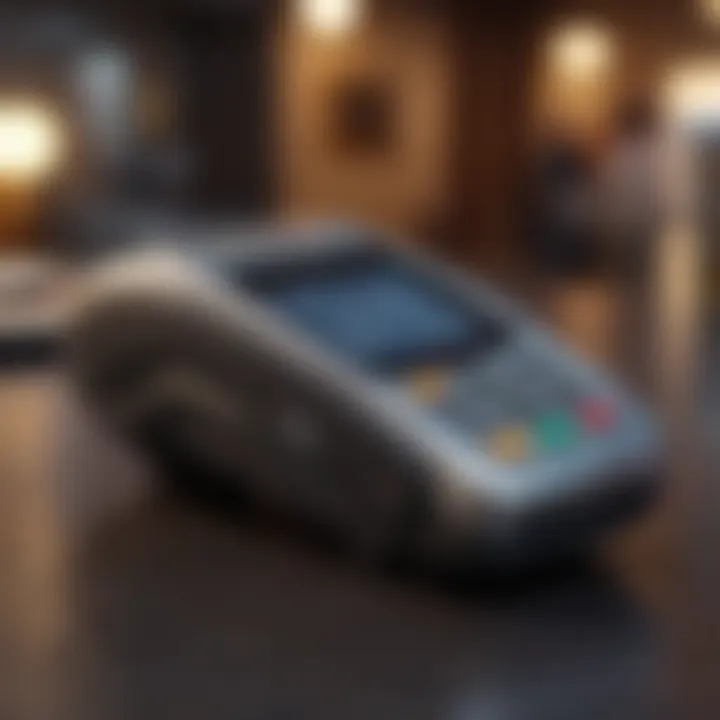
How Tap and Go Technology Works
The operation of tap and go technology is crucial in grasping how contactless payments function. It immerses the user in a seamless world of transactions, where pressing a card against a terminal often makes payment feel almost effortless. This ease of use appeals to consumers craving speed, particularly in high-traffic areas such as grocery stores or public transport stations. The importance of understanding how this technology works extends beyond mere convenience. It also informs users about the technology's implications on security and transaction processes, allowing them to make informed decisions about their financial transactions.
NFC Technology Explained
At the heart of tap and go credit cards lies Near Field Communication (NFC) technology. Essentially, NFC allows devices to communicate wirelessly when they’re close to one another—generally within a few centimeters. It’s like a handshake; both parties need to be close enough to make the connection.
When a tap occurs, the card and terminal engage in a back-and-forth dance of data exchange. NFC works by inducing an electromagnetic field that activates the card's antenna. Cards equipped with an NFC chip transmit payment data securely to the reader. This process takes just a fraction of a second, making it a snappy experience for users. Many don’t even have to worry about scrolling through the card to find the magnetic strip. Just a gentle tap will suffice.
Furthermore, NFC technology offers encryption, which enhances security. Each transaction is encrypted and often features a unique code for each purchase, which minimizes the risk of exposure to unauthorized use. This means that even if a person's card ends up in the wrong hands, hackers would find breaking into the system quite the challenge.
The Transaction Process
Understanding the steps involved in the transaction process of tap and go technology can demystify how purchasing goods has transformed over the years.
- Initiation: The user approaches the payment terminal with their card. The terminal sends out a signal to detect any NFC-enabled devices nearby.
- Proximity and Activation: Once the card is near enough, it activates and starts sending encoded payment information to the terminal.
- Data Transmission: The terminal receives and decodes the information transferred through NFC technology. This data typically includes the card number, expiration date, and a security code.
- Authorization: The terminal transmits the data to the payment processor, which checks if the card has sufficient funds and if the transaction is valid.
- Completion: Once approved, a confirmation signal gets sent back to the terminal, which lights up and possibly emits a beep to confirm that the transaction is complete. The user can grab their receipt and move along—often without needing to enter a PIN for lower amounts.
"The tap and go technology has been a game changer, paving the way for faster transactions while ensuring security through encrypted communication."
The elegance of this process lies in its simplicity. While the underlying technology is sophisticated, the experience feels straightforward for users. With every tap, customers brush against the future of payments—where simplicity and security walk hand in hand.
Advantages of Tap and Go Credit Cards
In a world that thrives on speed and convenience, the merits of tap and go credit cards cannot be overstated. These innovations in payment technology not only make transactions faster but also align with modern consumer habits, especially in times when efficient service is paramount. Understanding the advantages of tap and go cards is essential for anyone looking to navigate today’s financial landscape effectively, whether you’re just dipping your toes into contactless payments or you’ve been around the block before.
Convenience and Speed
Tap and go credit cards have revolutionized the way consumers interact with payment systems. Gone are the days when you had to fish for exact change or awkwardly fumble with your wallet. Now, you simply tap your card against a reader, and voilà— the payment is processed in a heartbeat.
This simplicity is particularly beneficial in places where speed matters, such as coffee shops or transit stations. Imagine rushing to catch a train; the last thing you want is to hold up the line rifling through your wallet for cash or entering a long PIN. With these cards, there's no need to worry about slow transactions or time-consuming methods.
Moreover, tap and go cards help to streamline the checkout process. Retailers can serve more customers in less time, ultimately leading to improved customer satisfaction. In busy retail environments, this efficiency can enhance both the shopping experience and store profitability.
Reduced Physical Contact
In light of recent global events, the public's appetite for contactless payment options has increased significantly. One of the foremost advantages of tap and go credit cards is the benefit of minimal physical contact during transactions. In a world where health concerns are front and center, consumers are increasingly seeking ways to minimize their exposure to surfaces that could harbor germs.
With these cards, users can complete their transactions without physically handing their card over to someone else or touching a payment keypad. Instead of keying in your PIN or wandering about searching for cash, a simple tap is all that’s needed. This change not only fosters a feeling of safety but also enhances personal convenience; think of it as a way to take care of business without the usual hassle.
It's also worth noting that many tap and go systems come equipped with advanced security measures. The technology behind these cards makes it difficult for fraudsters to intercept transactions, providing another layer of reassurance for users.
In summary, the benefits of tap and go credit cards are manifold—ranging from speed and convenience to reduced interaction with potentially contaminated surfaces. Understanding these advantages can empower consumers to make informed decisions about their payment options in an increasingly digital world.
"Convenience is not about cutting corners; it's about enhancing experience."
By embracing contactless payments, consumers position themselves at the forefront of modern transactions, paving the way for a future where quick and secure service is the norm.
Potential Disadvantages
When considering the landscape of modern payment methods, tap and go credit cards reveal their shine, yet they also come with clouds lurking overhead. Understanding the potential disadvantages is crucial for consumers who want to make informed decisions about their financial tools and practices. This exploration not only aids in grasping the shortcomings but also cultivates a more rounded perspective on how convenient aspects of these cards are sometimes shadowed by risks and limitations.
Security Concerns
Risk of Theft
In a world where technology accelerates faster than we can blink, the risk of theft surrounding tap and go credit cards cannot be ignored. These cards utilize NFC technology, making transactions easier but also attracting unwanted attention from petty criminals. While many folks appreciate the speed and convenience, the key characteristic here is vulnerability. Just imagine someone with a scanner brushing past you in a crowded area, quietly swiping your information without you even noticing. It may sound like a scene from a heist movie, but incidents do occur.
The unique feature of such theft lies in its stealthiness. In theory, NFC technology allows a card to be read without physical contact, which can also lead to unauthorized transactions if proper precautions aren't taken. While banks often provide fraud protection, there’s still an element of worry for users who hustle and bustle through daily life. So, while some might argue this technology is a blessing, one must weigh whether those benefits outweigh the looming risks.
Fraudulent Transactions
Next on the list is fraudulent transactions, a term that makes many card users’ hairs stand on end. These shady dealings are often facilitated by just waving a stolen or misused card near a reader, leading to swift expenses that could leave someone high and dry. The key characteristic of these transactions lies in their speed—because they can happen almost instantaneously, they can lead you to feel utterly helpless.
A striking aspect of this concern is the anonymity that tap and go transactions provide. This sometimes has the unintended consequence of making it easier for fraudsters who enjoy using these cards without accountability. However, many financial institutions have systems in places to monitor unusual activities and protect their customers, but that doesn’t mean fraud is entirely eradicated.
Transaction Limits
Moving on from security, another significant disadvantage comes in the form of transaction limits. Many tap and go systems set caps on the amount that can be spent in a single transaction or within a set timeframe. This cap is designed to add a layer of protection against fraud, but it can also be an inconvenience for consumers who are accustomed to spending larger sums without a hitch.
Additionally, when you find yourself at a grocery store checkout and you’ve hit your limit, it might turn your smooth shopping experience into a hassle. This might not even cross your mind when you initially embrace the convenience of tap and go. It's important to stay informed about these limitations and know that they might affect your everyday purchases, especially for larger expenses or when traveling.


Market Trends and Adoption Rates
Understanding the market trends and adoption rates of tap and go credit cards plays a pivotal role in grasping the wider implications these cards have on consumer behavior and the financial landscape at large. This analysis not only highlights the acceptance of contactless payment methods but also brings to light shifting consumer preferences and the future path of financial technologies. In an increasingly digital world, where speed and security are paramount, the evolution of payment options directly correlates to how individuals and businesses adapt to new norms and expectations.
Global Adoption Trends
The leap towards tap and go credit cards isn’t just a fly-by-night phenomenon; it’s a trend firmly rooted in the modern consumer’s need for convenience. As of recent reports, over half of all card payments globally are now processed via contactless methods. Nations like Australia and the UK have embraced this change, leading the charge with adoption rates soaring to nearly 85% in some regions.
What's driving this surge? For one, the pandemic spurred a significant rise in contactless payment solutions as businesses sought to minimize physical interactions. People, wary of germs and crowded places, found tap and go cards to be a godsend.
Research from financial institutions shows that even after the height of the pandemic, this behavior has cemented itself, with consumers actively seeking contactless options for both everyday purchases and larger transactions. This pivot includes a noticeable uptick in mobile wallet integrations, such as Apple Pay and Google Pay, signifying a blend of traditional cards with digital convenience.
"In the financial ecosystem, adaptability is the name of the game, and tap and go technology is firmly in the spotlight."
Regional Differences in Usage
While global trends illustrate a general acceptance of tap and go credit cards, there are notable regional differences that shape their usage. In Europe, countries like Sweden and the Netherlands have led the charge, with cash usage dropping dramatically. In Sweden, shop owners have even begun to refuse physical cash altogether.
Conversely, in parts of Asia, especially in developing countries, the adoption of contactless payments faces challenges due to a significant portion of the population lacking access to traditional banking services. Here, mobile payments through platforms like Alipay and WeChat Pay dominate the landscape, often incorporating both banking and social media functionalities.
Another consideration is the regulatory environment. In North America, for instance, adoption is steady but varies drastically between urban and rural areas. Urban centers see more tap and go transactions, owing to the concentration of modern infrastructures like public transport systems that embrace contactless fare payments.
Key Takeaways for Consumers
- Awareness: Consumers should stay informed about the payment trends in their region. Understanding how businesses around them are evolving can inform better financial choices.
- Exploration: Trying out different cards can give users a sense of which ones offer the best features, fees, and rewards.
- Security: There should always be an awareness of security features tied to regional practices. In areas where tap and go is prevalent, ongoing security education is vital.
Whether looking at global trends or zooming in on specific regions, it is clear that tap and go credit cards are not just a passing trend. They are woven into the fabric of today’s financial practices and will likely shape how individuals and businesses engage in commerce in the years to come.
Comparative Analysis of Tap and Go Credit Cards
In today’s fast-paced world, understanding the differences between traditional payment methods and emerging technologies like tap and go credit cards is crucial for consumers. This section aims to shed light on how these two systems stack up against each other, encompassing both functional and experiential aspects. The technology isn’t simply changing how we pay but is also influencing habits and expectations around consumer spending.
Traditional vs. Contactless Payments
Traditional payment methods, such as swiping a credit card or handing over cash, have been around for ages. These methods involve physically presenting a card or money to a cashier. On the other hand, tap and go technology allows users to make payments by merely holding their card over a reader.
Key Differences:
- Speed and Convenience: Contactless payments speed up the transaction time significantly, allowing consumers to finish their shopping or dining experience quickly. Imagine being in a hurry at a busy café; just a quick tap, and you’re done.
- User Experience: The tactile sensation of physical cash or swiping a card provides a certain satisfaction for many people. Yet, the ease of tapping can enhance the shopping experience by reducing friction at checkout.
- Security Features: While both systems have security measures, the encryption technology behind tap and go offers an extra layer of protection through unique transaction codes. This safeguards transactions better than the magnetic strips found on traditional cards.
In terms of adoption, younger consumers are gravitating toward contactless payments, showcasing a shift in preferences driven by technology. However, older generations might cling to traditional methods for their familiarity and perceived safety.
Cost Analysis for Consumers
When it comes to tap and go credit cards, a financial breakdown reveals both potential savings and costs that consumers should consider. Here’s a closer look at fees, interest rates, and rewards programs associated with these cards.
Fees and Interest Rates
One of the most significant factors consumers inspect before possessing a credit card is its fee structure. Tap and go cards usually come with annual fees, late payment fees, and perhaps foreign transaction fees. These fees can vary widely among companies.
Key Characteristics:
- Comparative Cost Effectiveness: For people who often use their cards, the cost can balance out if they earn rewards or cashback.
- Interest Rates Variability: Depending on the issuer, interest rates on balances can swing from quite reasonable to very steep. Consumers should pay attention to rates before applying.
Thus, the balance between benefits and costs determines if these cards are a financially sound choice.
Rewards Programs
Many tap and go credit cards offer rewards programs that can benefit users significantly. Consumers earn points redeemable for travel, merchandise, or even cashback just for using their cards.
Key Characteristics:
- Incentives for Spending: Rewards programs encourage card use, especially during everyday transactions. The more you tap, the more you earn.
- Unique Offers: Some cards may include exclusive discounts or promotional events tailored specifically for cardholders, adding another incentive for use.
Nevertheless, consumers must tread carefully; those who carry a balance and incur high-interest charges may end up negating the rewards gained from their spending.
"Understanding the full scope of costs and benefits associated with tap and go credit cards can enable consumers to make informed financial decisions."
By weighing these various elements—traditional versus contactless methods, along with a clear cost-benefit analysis—readers can attain a comprehensive perspective on tap and go credit cards. This knowledge positions them to make strategic choices in their personal finances.
Consumer Behavior Towards Tap and Go Cards
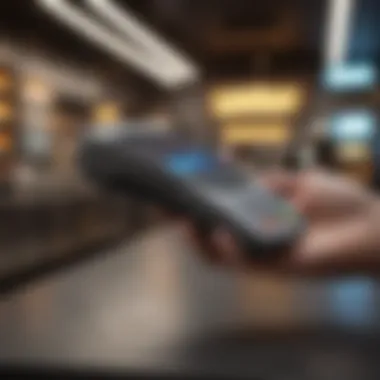
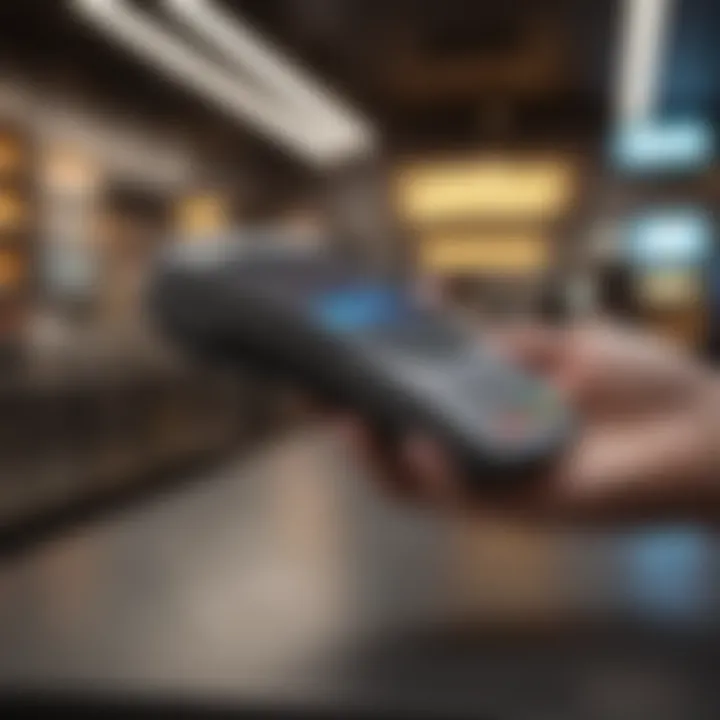
The study of consumer behavior towards tap and go cards is critical, given how these cards have revolutionized the way people engage with their finances. As technology continues to envelop financial transactions, understanding what drives individuals to adopt contactless payment methods enhances insights into market dynamics and potential growth areas. This aspect not only affects how consumers perceive convenience but also emphasizes an ever-deepening reliance on technology in daily transactions.
Consumer Preferences
Consumer preferences play a vital role in the adoption of tap and go cards. Many users appreciate the efficiency that comes with this technology. For instance, imagine a busy morning where one races to catch the bus—being able to simply tap a card instead of fumbling for cash or waiting for a card to be swiped can make a world of difference. Thus, speed is a significant motivator.
Moreover, the aesthetic of the card itself can be an influencing factor. Users often gravitate towards stylish designs that reflect their personal brand or values. Card issuers have caught onto this, creating visually appealing cards that stand out in a wallet. Other users prioritize features like cashback rewards or points, steering them to specific providers that cater to these preferences.
- Speed and Convenience: Consumers value the quick transaction time.
- Design: A card that looks good carries extra appeal.
- Rewards Programs: Points or cashback entice additional use.
Impact of Demographics
Demographic factors significantly shape how different groups interact with tap and go cards. Age, income levels, and geographic location can lead to variances in preferences and usage patterns. For instance, younger generations tend to embrace technology at a staggering pace, often seeing contactless payments as a natural progression in how they handle money. Conversely, older generations may exhibit hesitation, relying on traditional forms of payment due to a less extensive background with technology.
Consider the income variable. Higher-income individuals might be more inclined to experiment with the latest innovations in payment methods while those on lower incomes may prioritize cost over convenience, impacting their willingness to shift to contactless options.
The regional aspect contributes as well. People living in urban areas might be more prone to use tap and go cards due to the fast-paced nature of city life, whereas rural areas, where cash transactions are still predominant, may witness slower adoption rates.
"The way consumers approach tap and go technology is not merely about payment; it reflects a broader shift in societal values regarding convenience, technology, and consumerism."
Practical Tips for Users
Understanding how to navigate the world of tap and go credit cards is not just about knowing what features are available, but also about recognizing how to choose wisely and use them safely. It's essential for cardholders to grasp these practical tips, as they empower users to make informed decisions and maximize their benefits.
Choosing the Right Card
When it comes to selecting a tap and go card, there’s more than meets the eye. The features a card offers can determine how advantageous it is in everyday transactions.
Comparative Features to Consider
One of the most critical factors in this decision is the reward programs associated with different cards. Some cards pile on points for every transaction while others may focus on cashback. For instance, a card like the Chase Freedom Unlimited lays out a straightforward cashback structure where you can easily grasp potential rewards.
The annual fees are also a significant consideration. Some cards charge hefty fees for their perks, while others might provide similar benefits at a fraction of the cost. Take a look at cards like the Discover it Card, which has no annual fee but still offers robust benefits.
A unique feature worth highlighting is foreign transaction fees. If you travel often, a card with no foreign transaction fees could be a game changers. Imagine having to change gears when abroad, only to realize your card is racking up extra charges! This characteristic cuts costs significantly during overseas trips.
Assessing Personal Needs
The process of choosing a card doesn't stop at features; you must assess your own spending habits. Every user has unique financial landscapes that can dictate what they truly need from a card.
Budgeting is a critical aspect. Determine how often you will use the card and for what type of purchases. For example, if you primarily utilize your card for grocery shopping, a card like the American Express Blue Cash Preferred, which offers high cashback on supermarkets, would be beneficial.
Another essential feature worth examining is credit score requirements. If you have a limited credit history, opting for a card that’s easier to qualify for, like Capital One Secured Mastercard, might make more sense. This characteristic can greatly influence your approval chances while helping you build your credit.
Maintaining Security
In a world where identity theft and fraud run rampant, the need for maintaining the security of your tap and go card cannot be emphasized enough. Keep your PIN secure and be mindful of your surroundings when tapping to pay. Unsecured public networks can lead to vulnerabilities, so it is better to avoid them during transactions.
Establishing alerts for transactions can also keep you in the loop. Immediate notification can flag unauthorized charges before they spiral out of control. Using features like temporary locks on lost cards prevents unauthorized access in moments of panic.
Investing in a good card is akin to choosing the right tool for a job. It should fit your personal finance landscape, assuring a blend of functionality and security.
By adhering to these practical tips, users not only enhance their experience with tap and go credit cards but also ensure they are making sound financial choices suited to their individual needs.
Future Developments and Innovations
As we venture further into the age of digital payments, future developments and innovations surrounding tap and go credit cards are shaped by the intersection of technology and consumer demand. The pace at which this sector evolves is not just about convenience; it also touches on security measures and the integration of new technologies. For consumers, understanding these advancements can make a significant difference in how they manage their finances and interact with monetary systems.
Emerging Technologies
Biometric Payment Systems
One of the most striking advancements in payment solutions is the emergence of biometric payment systems. This technology utilizes unique biological characteristics—like fingerprints, facial recognition, or even iris scans—to verify users' identities. The key characteristic here is that it enhances security by making it exceedingly difficult for fraudsters to impersonate someone when a personal, physical trait is involved.
The significant advantage of these systems is that they provide a seamless and ultra-secure way to authorize transactions. For example, instead of fumbling for a card at the checkout, a consumer can simply place a finger on a scanner. However, the disadvantage lies in how some people view privacy concerns associated with sharing their biometric data. The balance between convenience and privacy becomes a critical matter, especially for the more cautious clientele.
"The integration of biometric technology into payment systems represents a quantum leap in ensuring security without sacrificing user experience."
Integration with Mobile Wallets
Another trend gaining momentum is the integration with mobile wallets, wherein tap and go credit cards can be linked directly to digital wallet applications like Apple Pay or Google Pay. This advancement allows users to store multiple payment options in one convenient app. The key characteristic is the flexibility it provides, making transactions easier and more accessible at points of sale.
The unique feature of this integration is the ability for users to conduct transactions without physically carrying their cards. It encourages responsible budgeting as well, since many mobile wallets offer tracking tools for spending. Yet, the drawback can often be the reliance on smartphones and the potential for connectivity issues, which could lead to frustration during transactions.
Potential Influences on Financial Landscape
Looking ahead, these innovations will play a vital role in reshaping the broader financial landscape. Biometric payment methods and mobile wallet integration could redefine how security protocols are managed, leading institutions to reconsider risk assessments. Consumer behaviors may shift too—people might demand more tailored experiences that a digital wallet can deliver. As technology progresses, we may see a decrease in cash usage while contactless transactions could become the norm. If financial institutions adapt accordingly, they stand to benefit greatly from these transitions, ensuring they are well-positioned in an increasingly digital world.















